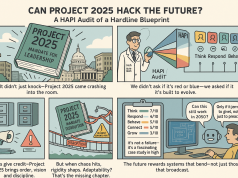In a world where branding is predominantly seen as the domain of the private sector, there is a quiet yet powerful transformation occurring in public service. This article will explore how government workplaces are undertaking rebranding initiatives to attract and retain a modern workforce, shake off outdated perceptions, and better reflect the dynamism and diversity of public service in the 21st century.
The notion of government work has traditionally been associated with bureaucracy and inefficiency. However, as society’s expectations shift and the competition for skilled labor intensifies, public sector organizations are increasingly recognizing the need for a strong, appealing brand. This is not merely about aesthetics or public relations; it is about fundamentally rethinking the government’s role as an employer in a rapidly evolving job market.
One might wonder, can government agencies truly reinvent themselves? Case studies from various parts of the world suggest they can. Take, for example, the rebranding of a city’s transportation department, which moved away from its staid image by embracing social media, updating its visual identity, and launching community engagement initiatives. This not only improved public perception but also made it an attractive workplace for young professionals.
Employee morale is another significant aspect of this endeavor. A rebranded workplace can foster a sense of pride and belonging among employees. This, in turn, can lead to heightened productivity and a greater sense of mission. But it’s not just about the internal climate. The external perception of a more modern and responsive government can enhance public trust and engagement, an invaluable currency in the realm of public service.
However, rebranding in the government sector faces unique challenges. There is the necessity to balance innovation with the core values of transparency, accountability, and service. Moreover, every change must be carefully scrutinized to ensure it serves the public interest and not just a superficial makeover.
In conclusion, as we examine these rebranding efforts, it is essential to question how such changes align with the enduring values of the public service. This not only includes visual identity and marketing but also the policies, employee training programs, and the myriad ways by which government agencies interact with citizens and stakeholders. We invite our readers – those accustomed to the in-depth analyses provided by esteemed publications such as the Washington Post, The New Yorker, and The New York Times – to reflect on this evolving landscape of public sector branding. It is clear that an effective rebranding strategy can yield a more motivated workforce and a government that better serves its people. But how do we ensure these strategies honor the spirit of public service? The dialogue is just beginning, and your insights are more crucial than ever.


























